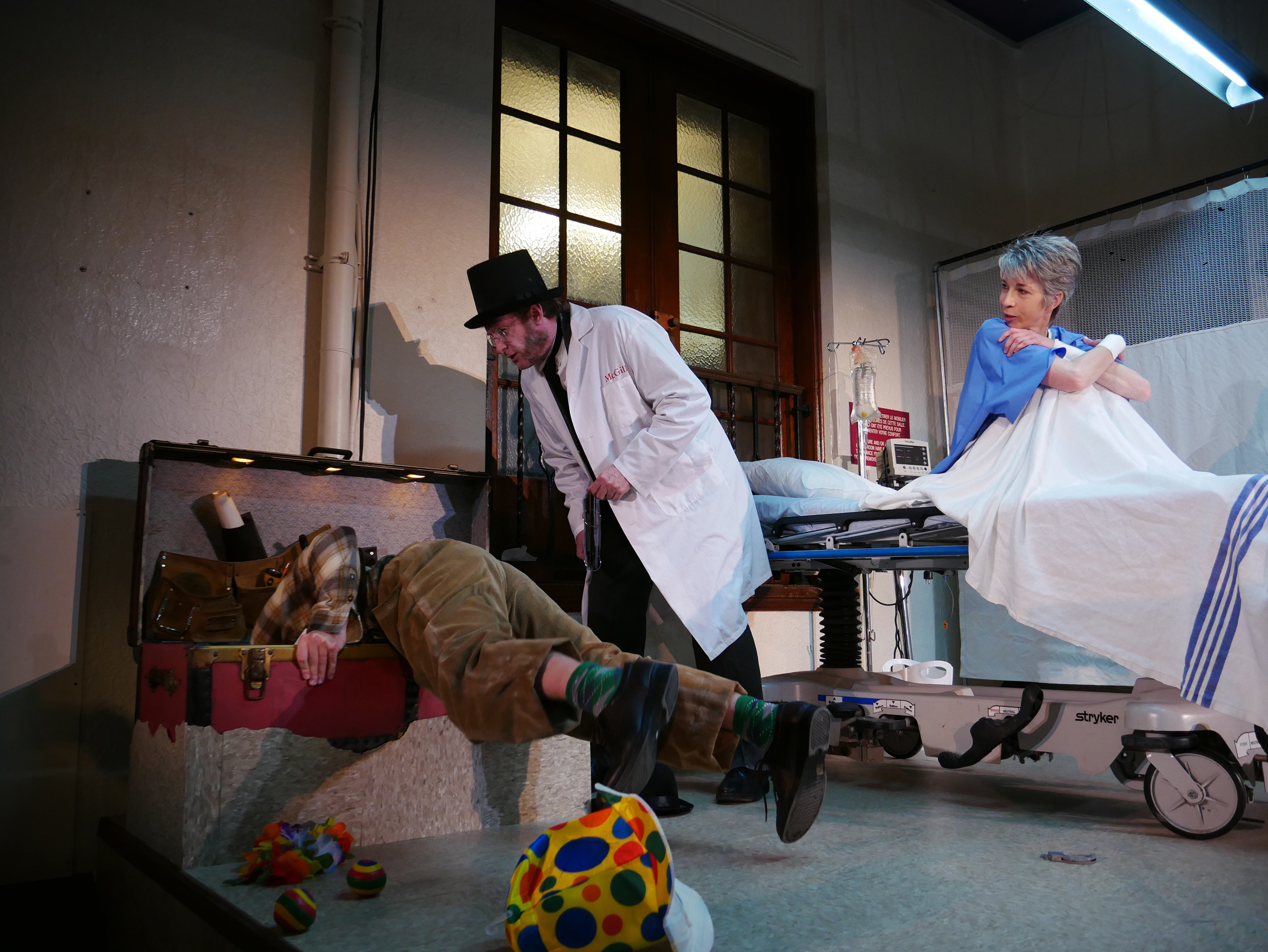Until Nov. 1, catch Infinithéâtre’s Progress! in the nurses’ lounge of the landmark hospital
Last Tuesday, Progress!—a play written by Alyson Grant that uses ghosts to celebrate and commemorate the buildings of the Royal Victoria Hospital on Pine Avenue—held its preview on site.
The Royal Vic, as it’s known locally, opened in 1893 to mark Queen Victoria’s Golden Jubilee and moved to the Glen site in NDG last April.
Grant ascribed her inspiration for Progress! to her own attempts to come to terms with the changing function of the Pine Avenue buildings, which have been used by many Montrealers to recover from ailments, to give birth and to say farewell to loved ones.
“The exclamation mark [in the title] suggests the irony behind progress,“ said Grant.
Grant’s connection with the Royal Vic started in her early 20s when her boyfriend was a patient there. Although it was at the Montreal Neurological Institute where he eventually passed away, Grant spent a lot of time at the Royal Vic during his illness and had become very familiar with its smell and taste of its food.
The tale begins during the later part of the Victorian era. As the show opens, the ghosts of the first two people to die in one of the hospital’s rooms come onstage to interact with the audience. These characters, known simply as No. 1 (played by Peter Farbridge) and No. 2 (played by Daniel Brochu), form a Vaudevillian duo, delivering jokes and slapstick comedy. The action then shifts to a room where a suicidal woman (played by K.C. Coombs) has just been admitted. The ghosts set out to help her understand the cause s for her sadness and despair that led to her attempted suicide. By doing so, they hope she will avoid becoming the hospital’s latest ghost. This retrospection offers moments of comic relief and evokes themes of religion, fate, the afterlife, abandonment, relationships and family ties while questioning the relevance of progress—all with the human touch expected at a hospital.
The director, Guy Sprung, said Progress! attempts to strike a very delicate balance between humour on one side and despair and sadness on the other. “I hope we get that balance there, so that you come away with something and at the same time it is a celebration of this hospital and its history,” said Sprung.
The nurses’ lounge was converted into a theatrical space for this play. “There is no doubt that the play has an extraordinary resonance because of the location,” said Sprung. The way the characters move around the set allows the audience to participate in the action as it unravels. Sprung also noted that the cast feels a certain amount of nostalgia towards these buildings, particularly since three of the actors and the stage manager were born within their walls. Vaudevillian in style, Progress! is an entertaining reminder of the historic relevance of these buildings.
Presented by Infinithéâtre—which promotes new theatrical works in Quebec—Progress! premiered on Oct. 21 and will be playing at the nurses’ lounge of the former location of the Royal Victoria Hospital on Pine Avenue until Nov. 1. Tickets are $20 for students and can be purchased at Infinithéâtre.com.
